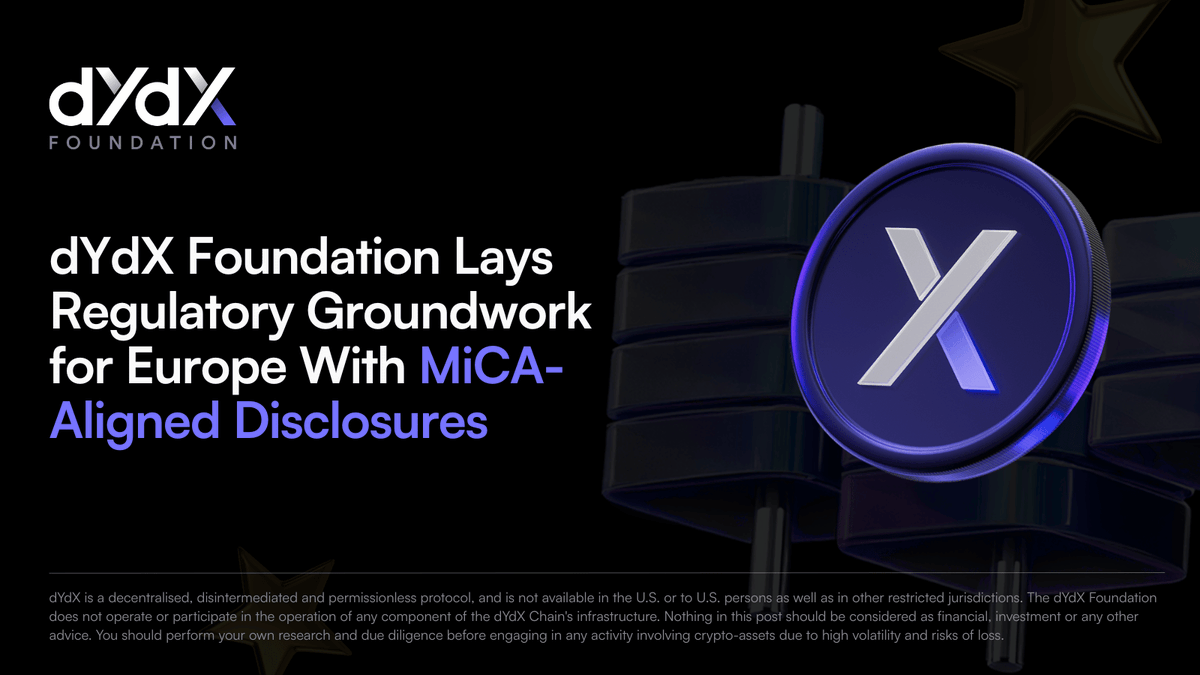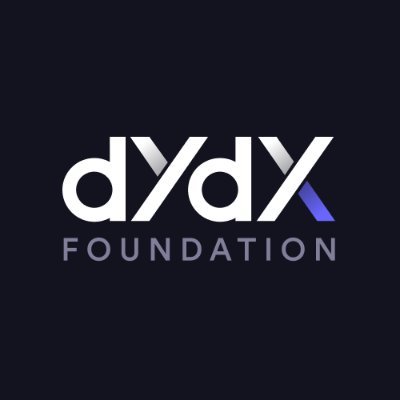As Europe advances one of the most comprehensive crypto regulatory regimes, projects across the industry are grappling with a new imperative: prove your structure, disclose your design, and operate with regulatory coherence.
In May 2025, the dYdX Foundation published a MiCA-aligned Whitepaper for the DYDX token - voluntarily and preemptively.
Not to market compliance, but to demonstrate how token-driven protocols can meet the disclosure standards of MiCA without compromising on decentralisation or utility. 🧵

MiCA brings standardized legal definitions and disclosure requirements to crypto assets across the European Union.
For tokens with utility functions, staking mechanisms, and embedded governance rights, clarity around structure and risk is no longer optional.
This shift places pressure on protocols to articulate not just what their tokens do, but how they operate, how risks are mitigated, and how decentralisation is achieved.
The DYDX Whitepaper does exactly that - spanning more than 30 pages of disclosures, risk statements, technical structure, and ecosystem roles.
For some background context, the DYDX token began as an Ethereum-based governance token for dYdX v3.
Following a 2023 governance vote, the protocol migrated to a sovereign Layer 1 - the dYDX Chain - built using the Cosmos SDK and secured by a decentralised validator set.
Today, the DYDX token is natively embedded in the dYdX Chain’s core functionality, including:
- Security: DYDX is staked with validators to secure the chain and supports consensus
- Governance: DYDX stakers can propose and vote on on-chain decisions
- Staking rewards: Fees from trading and network transactions are distributed to DYDX stakers
- Capital allocation: DYDX stakers and validators, through dYdX governance, can fund dYdX DAO contributors who execute on dYdX protocol initiatives.
This utility model aligns with MiCA’s emphasis on defining asset roles and associated rights - not as abstract tokens, but as operational tools embedded in functioning systems.
The DYDX Whitepaper goes beyond function though. It also outlines 20+ risk categories, including:
- Validator downtime and slashing risk
- Smart contract vulnerabilities
- Cross-chain bridge risk
- Governance capture and voting concentration
- Custodial management by third-party staking services
- Environmental impact, including validator energy consumption and sustainability disclosures
Critically, this isn't retrofitted to meet compliance - it reflects how the DYDX token has been architected from the ground up, since its migration to the dYdX Chain.
The design minimizes emissions, avoids reliance on inflationary mechanics, and emphasizes transparency through governance forums, dashboards, and real-time tracking tools.
Another one of the most distinguishing elements of the DYDX token model is that staking rewards are not paid through inflation.
Instead, staking rewards are funded entirely by protocol activity - primarily trading and transaction fees.
- Rewards are paid in USDC, not newly minted DYDX
- There is no dilution of token supply for this purpose
- APR is dynamic, fluctuating with real protocol usage
This usage-based structure alters how the token is likely to be viewed under MiCA’s classification system, distancing it from speculative models and aligning it more closely with infrastructure-like utility.
What’s important about this disclosure effort isn’t just what’s written - it’s who it’s for. The Whitepaper provides clear, factual guidance for:
- Regulators and policymakers evaluating tokens under MiCA
- Institutional partners and exchanges assessing listing eligibility
- Validators and community members seeking to understand their rights and risks
- Legal teams navigating compliance across jurisdictions
As more jurisdictions adopt MiCA-like frameworks, disclosures of this caliber may shift from optional to expected.
DYDX is already there.
Please note that the DYDX Whitepaper has been made publicly available by the dYdX Foundation at its own initiative and discretion.
The Whitepaper has not been published as a result of an obligation to comply with MiCA or any other EU regulations and has not been reviewed or approved by any EU national competent authority.
10.58K
85
The content on this page is provided by third parties. Unless otherwise stated, OKX is not the author of the cited article(s) and does not claim any copyright in the materials. The content is provided for informational purposes only and does not represent the views of OKX. It is not intended to be an endorsement of any kind and should not be considered investment advice or a solicitation to buy or sell digital assets. To the extent generative AI is utilized to provide summaries or other information, such AI generated content may be inaccurate or inconsistent. Please read the linked article for more details and information. OKX is not responsible for content hosted on third party sites. Digital asset holdings, including stablecoins and NFTs, involve a high degree of risk and can fluctuate greatly. You should carefully consider whether trading or holding digital assets is suitable for you in light of your financial condition.

